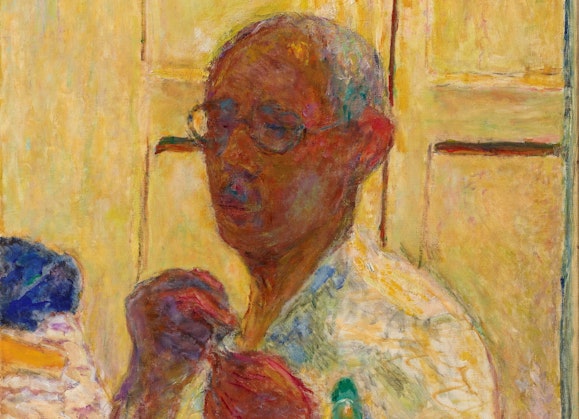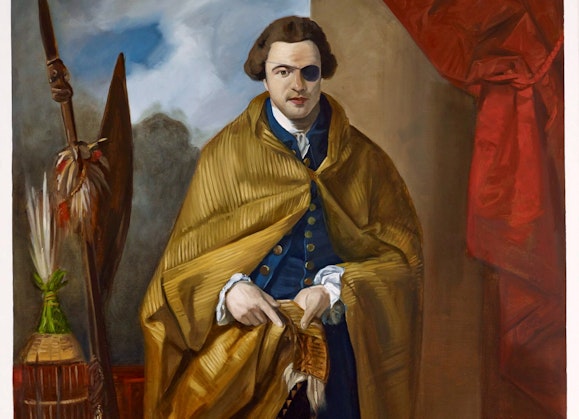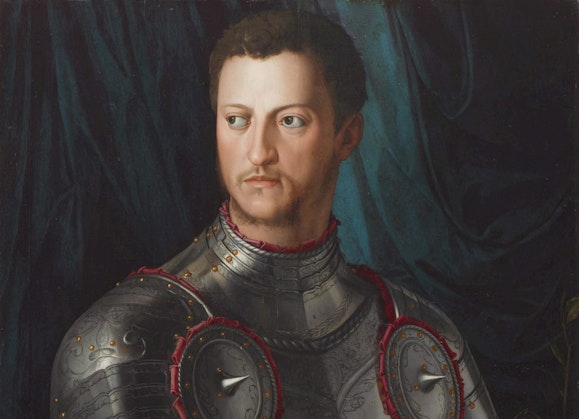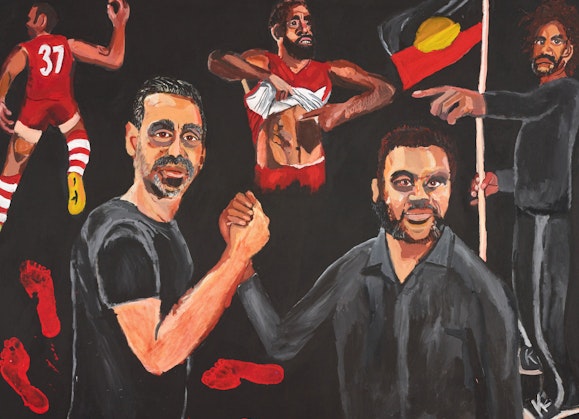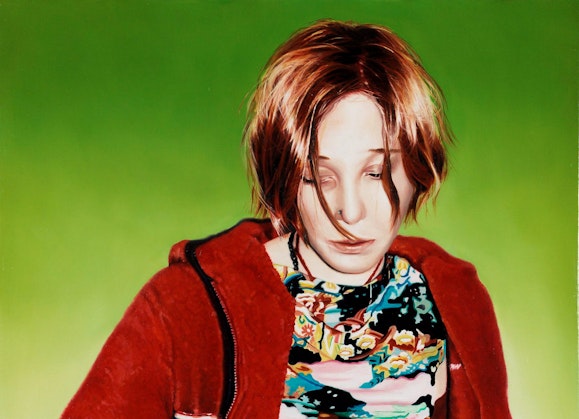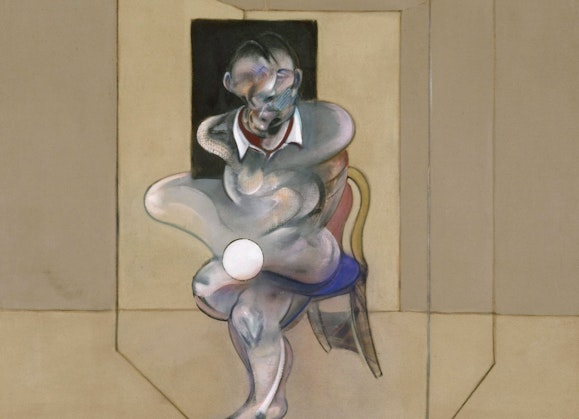Portraiture
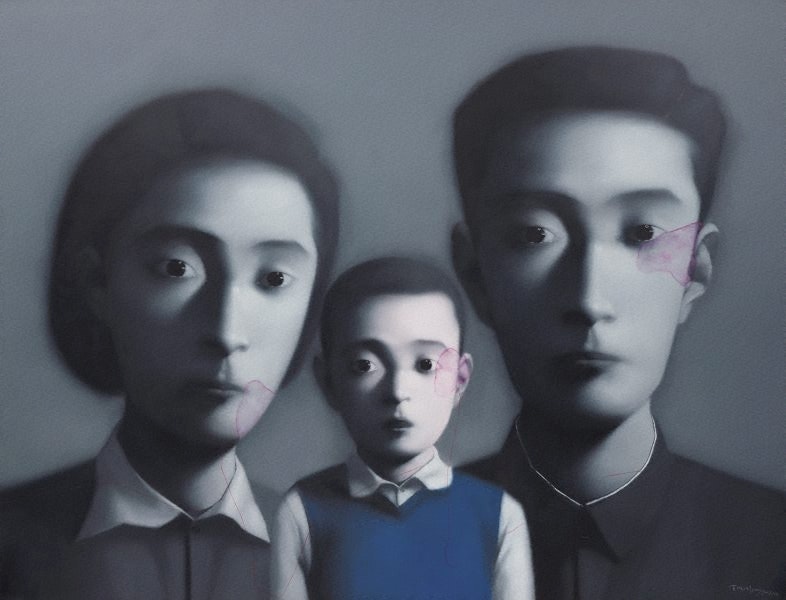
Zhang Xiaogang, Big family no.4, 2007 (detail), Art Gallery of New South Wales © Zhang Xiaogang
How to use this resource
This learning resource is designed to engage primary and secondary students with the ideas and practices of portraiture. Using portraits from the Art Gallery’s collection, it brings together information about the genre, ideas for thematic exploration, and strategies for making and thinking about portraiture.
Each theme below includes ‘create’, ‘engage’, ‘investigate’ and ‘reflect’ activities that are designed to inspire art-making and discussions about portraiture.
Create: making art using activities to build confidence in exploring portraiture
Engage: talking, debating and discussing artworks and ideas
Investigate: researching and developing viewpoints about art and artists
Reflect: thinking and responding to art and art-making
-
Key questions
What is the purpose of a portrait?
What portraits do you like and why?
How and why have artistic styles and approaches to portraiture changed over time?
Is every artwork depicting a person a ‘portrait’?
Do portraits have to show someone’s likeness to be called a portrait?
What are some of the ways artists tell us something about their sitter through portraiture?
What can portraiture reveal about the relationship between the artist and the sitter?
What is the role of the audience in portraiture?
How do visual representations of people differ across cultures?
What’s the difference between portraits in a museum and a ‘selfie’ on your phone?
If you were to have your portrait made, which artist would you choose to create it and why?
-
What is a portrait?
A portrait is an artistic representation of a person or group of people and portraiture is the practice of making portraits. A self-portrait is a portrait of the artist by the artist. The person depicted in a portrait is called the sitter, and the artist is often called a portraitist. The term itself comes from the French word portrait or the Old French term portraire, meaning ‘to paint, depict’. The central idea or aim of a portrait is to convey a sense of the sitter, their likeness and/or identity at a particular time and place. Portraits can reveal how the idea of personhood has been reflected in and shaped by art.
Visual representations of people have long been a human interest. Some of the earliest known examples of portraiture are ancient Egyptian mummy portraits dating back to the first century. Over time, portraiture in Western art has been used to show a sitter’s power, wealth, beauty or virtue. The Renaissance, which took place from the 14th to the 17th century in Europe, is a notable period in portraiture due to the renewed interest in humanism and the individual. Likewise, the invention of photography in the mid 1800s made way for a diversity of sitters and a deeper engagement with the psychology of the subject. Today, artists continue to experiment and broaden the dimensions of portraiture using a range of conceptual, material and cultural approaches. The Archibald Prize, established in 1921, records some of these developments and tells a story of people and portraiture in Australia.
-
How to read a portrait
A portrait can be read or understood in many ways. These strategies and questions can be used to analyse and interpret portraits, helping to guide the eye and reveal the story of the sitter.
Facial expression: Where is the sitter looking? What emotion is conveyed?
Body language: Is the sitter shown full-length or close-up? What does their pose communicate to us?
Clothing and hairstyle: What is the sitter wearing and how have they styled their hair? What do these things tell us about their personality, profession or status?
Setting: Where is the portrait set? What is the background? What does the setting communicate to us about the sitter?
Objects and symbols: Are there any objects depicted in the artwork? What might they symbolise, and do they provide any information about the sitter?
Composition: What scale is used? How is the sitter positioned within the artwork, and what is their relationship to other elements in the work? Where is your eye drawn, and what might this communicate about the sitter?
Artistic style and technique: What colours and media have the artist selected to create the portrait? Is it realistic or abstract? Do these artistic choices and the artist’s own style tell us something about the sitter or context?
Context: When and where was the portrait created? Who is the intended audience? What is the purpose of the portrait?
-
Quotes about portraiture
All the houses of Venice contain numerous portraits, and several noble houses have of their ancestors to the fourth generation, while some of the noblest go even farther back. The custom is an admirable one, and was in use among the ancients … To what other end did the ancients place the images of their great men in public places, with laudatory inscriptions, except to kindle. Those who come after to virtue and glory!
Mr Lely, I desire you would use all your skill to paint my picture truly like me, and not flatter me at all; but remark all these roughnesses, pimples, warts and everything as you see me, otherwise I will never pay a farthing for it.
A history painter paints man in general; a portrait painter, a particular man, and consequently a defective model.
Take note, young man, that the portrait should not be a reflection in a mirror, a daguerreotype produces that far better. The portrait must be a lyric poem, through which a whole personality, with all its thoughts, feelings and desires, speaks.
You would scarcely believe the difficulty of placing a single figure on a canvas, and of focusing all the interest on this solitary and unique figure while keeping it alive and real.
It is for the artist to do something beyond this [imitation]: in portrait painting to put on canvas something more than the face the model wears for that one day; to paint the man, in short, as well as his features.
Every portrait that is painted with feeling is a portrait of the artist, not of the sitter.
In order for a portrait to be a work of art it must not resemble the sitter.
The portrait is one of the most curious art forms. It demands special qualities in the artist, almost total kinship with the model.
Simply put, portraits are art works, intentionally made of living or once living people by artists, in a variety of media, and for an audience.
Likeness is sort of an automatic by-product of the way I work. I don’t care all that much about likeness. All my pictures tend to look more like the person I’m painting than the original photograph did. What interests me in all the work is the tension between the artificial and the real.
I want the paint to work as flesh does. If you don’t over-direct your models and you focus on their physical presence, interesting things often happen. You find that you capture something about them that neither of you knew.
By placing myself behind the camera I am taking control of my self-image and images of ourselves. I cannot, do not, take sole responsibility but challenge and attempt to reverse the expected.
The power of a portrait is that it can make someone feel seen and heard in a way that words often can’t.
